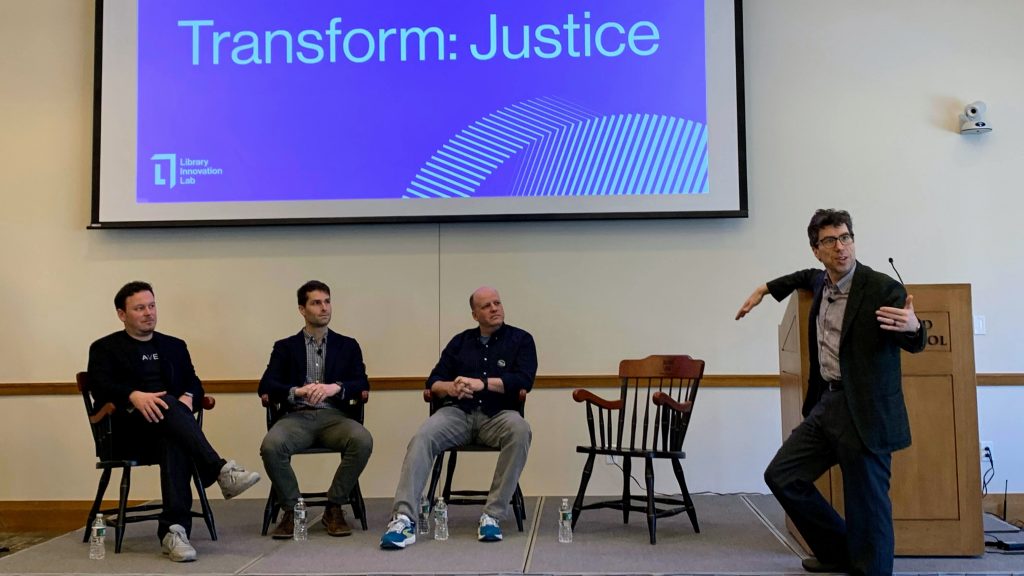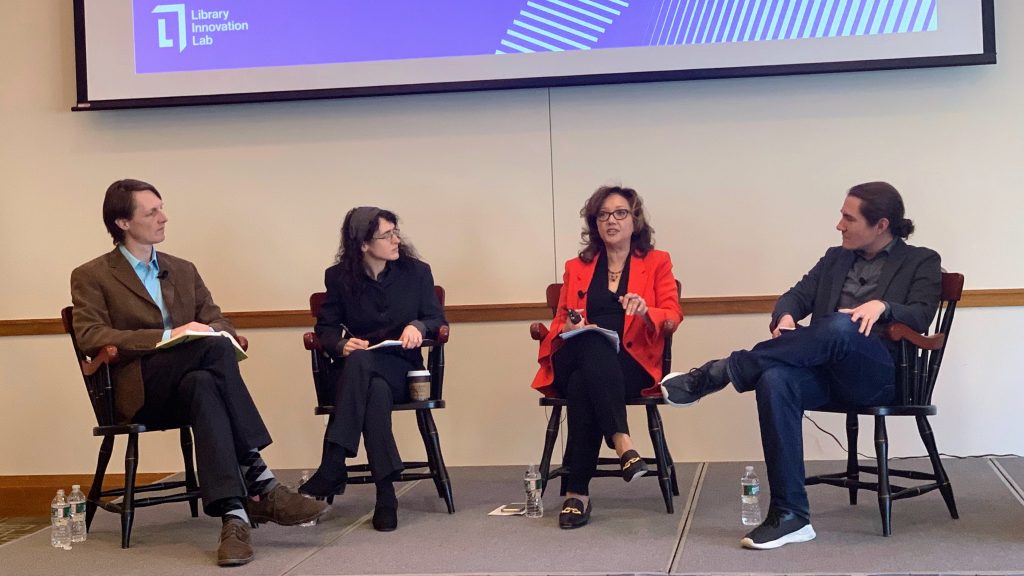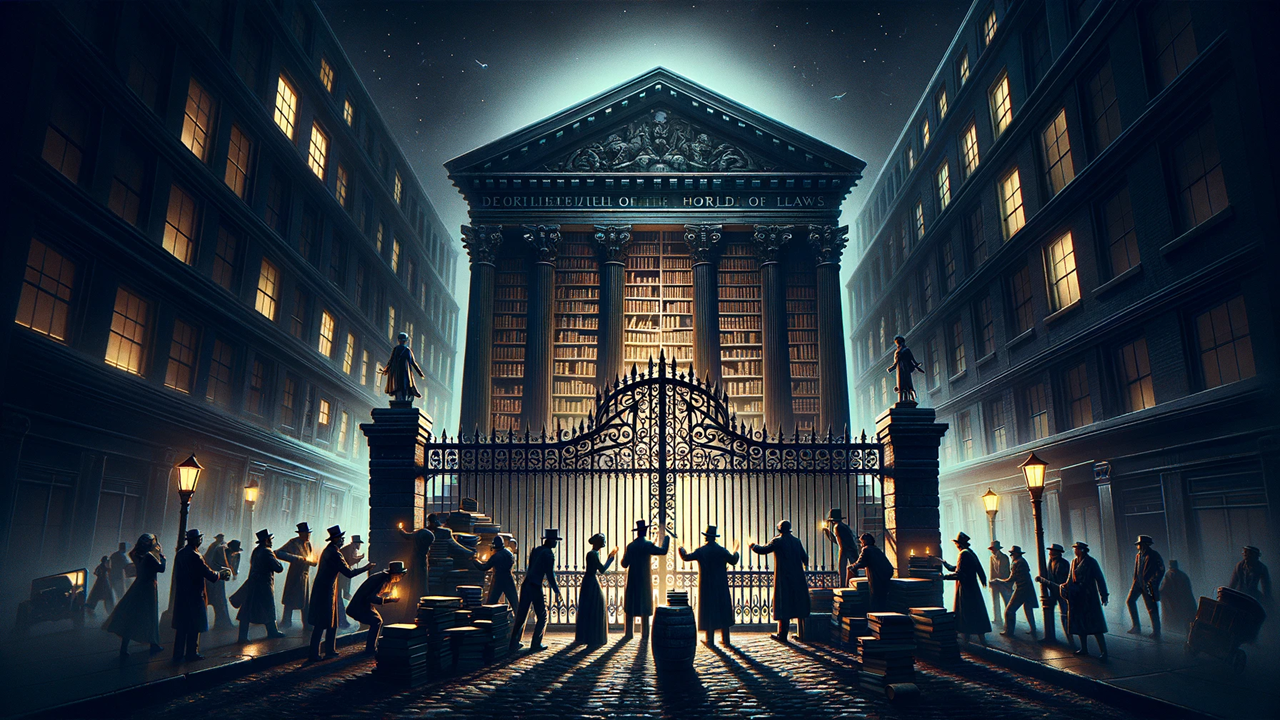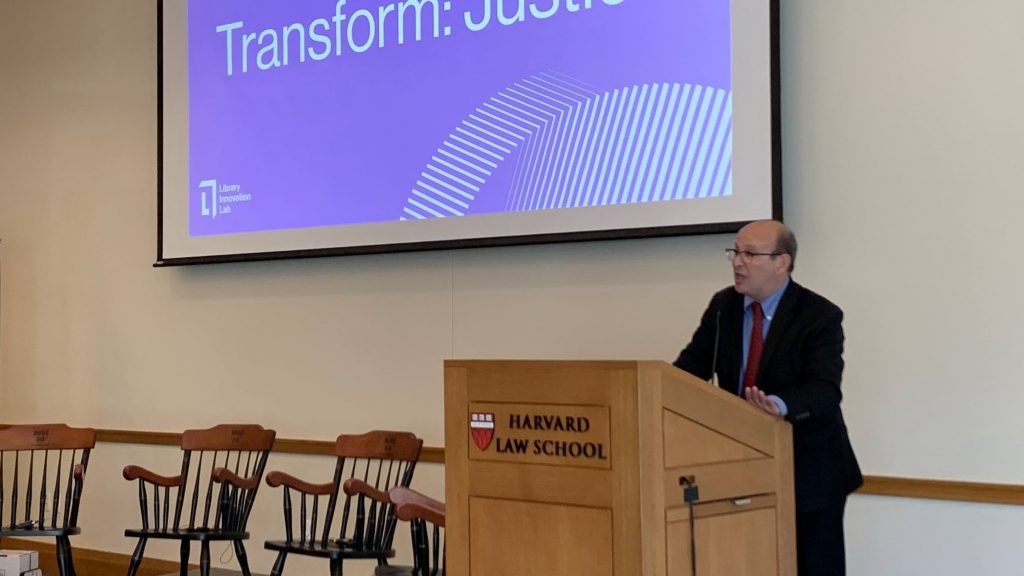Two travesties persist in tainting access by all to the U.S. legal system.
One is the gaping lack of access to justice. The Legal Services Corporation estimates that 92% of the civil legal problems of the roughly 50 million low-income Americans receive no or insufficient legal help. Reasonable minds can quibble over that number – some say it is exaggerated – but no one doubts or disputes that the legal system falls dramatically short of serving those who need it, not just for those with low incomes, but also for the middle class and small businesses.
The other is the continuing lack of public access to the law. For both primary and secondary legal materials, many remain under the commercial lock and key of major publishers, or under dubious claims of copyright by government entities, or so disparately and poorly organized as to be effectively inaccessible.
As to both these travesties, there are many individuals, groups and organizations working hard to resolve them. For the most part, however, it seems that they work along separate tracks, pursuing parallel missions but employing separate strategies.
Yet the fact is that these two travesties – and their hoped-for resolutions – are inextricably intertwined. We can never fully resolve the access to justice crisis unless we also resolve the lack of free and open access to the law. For many with legal problems, simply knowing the law and their rights is the first step toward achieving a resolution.
What this means, perhaps, is that there should be greater coordination and collaboration between those working to close the justice gap and those working to free the law. On both fronts, these are major fights, but in unity, as they say, there is strength.
Separate Summits
Once again, the fodder for these ruminations came from two parallel conferences. This happened a month ago, when I wrote a post, The Justice Gap in Legal Tech: A Tale of Two Conferences and the Implications for A2J, spurred by my impressions of the chasm between two conferences I attended in the same week – a chasm that drove home the funding gap between those who are developing legal technology to better meet the legal needs of low-income Americans and those who are developing legal tech to serve large law firms and corporate legal departments.
This time, the two summits were more closely aligned, and even physically adjacent, yet organizationally disconnected.
On Friday I attended Transform: Justice, a program by Harvard Law School’s Library Innovation Lab held to commemorate the full release of the Caselaw Access Project’s case law collection from all commercial restrictions, as well as to consider the future of free and open access to law.
Only as that day ended did I learn that, three-quarters of a mile from Harvard Law, the American Academy of Arts and Sciences was holding the Making Justice Accessible Summit, part of a project designed to advance a set of clear, national recommendations for closing the justice gap between the demand for civil legal services and the supply.
So at the same time that leaders of the access-to-law movement from all across the country were convening at Harvard to discuss their future course, just blocks away, leaders of the access-to-justice movement from all across the country were doing the same, each group oblivious to the other.
The Law Locked Away
I attended only the Harvard program, so I cannot speak to what happened at the other, but I can tell you that, among those at Harvard, there was a whole lot of connecting the dots going on between access to law and access to justice.
As Carl Malamud, a man who has devoted his career to making government information accessible to the public, put it in his speech to the Harvard group:
“Promulgation of the law is a fundamental tenet of the rule of law, promulgation of the law is integral to free speech, to commerce among the states, to due process, and to access to justice. In the United States, the law belongs to the people.”
Or at least, the law should belong to the people. Yet when Malamud and his organization Public.Resource.Org, sought to publish the official statutes of the state of Georgia, the state sued him, accusing him in its court filing of engaging in “terrorism.”
That fight went all the way to the Supreme Court, resulting in 2020 in a watershed ruling for public access to primary legal materials, Georgia v. Public.Resource.Org, Inc., holding that Georgia could not claim a copyright in the annotations contained in its official code.
Related: On LawNext Podcast: Carl Malamud on His Three-Plus Decades of Working to Free the Law.
Four years after that ruling, Malamud still cannot get an up-to-date copy of the Official Code of Georgia Annotated, he said in his speech Friday. It remains available only through LexisNexis, he said, subject to strict terms of use, a substantial rental fee, and technical restrictions on downloading and repurposing.
“It is read-only law,” he said. “It’s like a Netflix movie, which you can view on a properly registered viewer — if you have been authorized and authenticated — but guess what, don’t blink twice, as your movie may soon disappear.”
Georgia is not alone in asserting copyright over public law. Arkansas, Idaho, Mississippi, New Mexico and Tennessee all do as well, according to Malamud.
“If ignorance of the law is no excuse, how can we have access to justice and due process if the law is locked behind a pay wall and subject to onerous and arbitrary terms of use by private parties?” Malamud asked rhetorically.
At Friday’s conference, he proposed a solution: Congress should pass a law mandating that any edict of government, including those issued by the states and local governments, be subject to mandatory deposit within the Government Publishing Office, where they would be openly available to anyone.
Malamud finds authority for Congress to do this in the Full Faith and Credit clause of the Constitution, and specifically in its second sentence. While the first sentence of that clause requires that full faith and credit “shall be given in each State to the public Acts, Records, and judicial Proceedings of every other State,” the second sentence says, “And the Congress may by general Laws prescribe the Manner in which such Acts, Records and Proceedings shall be proved, and the Effect thereof.”
“For me, that second sentence is all about promulgation of the law, and I believe the answer is a Full Faith and Credit Act,” Malamud said. “The act would specify that any edict of government — including those issued by the states and local jurisdictions — are subject to mandatory deposit with the Government Publishing Office.”
Such a law would spur innovation in legal technology and actually benefit even established players like Lexis, Malamud asserted, in the same way that the lack of licensing restrictions way back in 1876 allowed John B. West to create the National Reporter System.
Law In Private Silos
Whether Congress would ever enact such a law remains to be seen. For now, however, the fact remains that access to much of the law remains walled off. To quote Malamud once more:
“Today, exclusive rights to our legal materials have been granted to private players, each of which hides the law in private silos. The natural resource that is our legal system, the raw materials of our democracy, have been fenced off and privatized.”
Even as that state of affairs persists, many individuals, groups and organizations are working hard to change it. Friday’s program was tangible evidence of this. It was the culmination of years of work – literally of manual work of slicing and scanning law books – with the goal of providing free and public access to all U.S. case law.

The originators of the Caselaw Access Project: Nik Reed and Daniel Lewis, then the cofounders of Ravel Law; Adam Ziegler, then director of Harvard’s Library Innovation Lab; and Jonathan Zittrain, Harvard Law professor.
Worth noting – having vilified LexisNexis in the discussion above of the Georgia case – is that the Caselaw Access Project probably never would have happened without the support initially of legal research startup Ravel Law and then of LexisNexis after it acquired Ravel. Yes, LexisNexis maintained a commercial restriction on the data through this month, but that was the quid pro quo that allowed the project to happen at all.
CAP’s database is a remarkable achievement in the annals of open access. But it is only one piece in a complex matrix of state, federal and local cases, laws, regulations, ordinances and more – not to mention secondary legal materials – where many remain inaccessible to the public.
Related: LawNext Episode 18: Adam Ziegler on How Harvard Put 360 Years of Caselaw Online.
Efforts to make law more accessible continue. In attendance at Friday’s conference were representatives of several of the other organizations that have been hard at work on this for years, most notably the Legal Information Institute and The Free Law Project.
Even other for-profit companies have been deeply and generously involved in providing free access to legal materials, including Justia, Fastcase and Canada-based Lexum.
Access to Justice Requires Access to Law
Friday’s program at Harvard ended with informal roundtables discussing the future of open access – what it looks like and how it gets there. The Library Innovation Lab plans to incorporate input from those roundtables in a report it will release about access to law, which it envisions as a tool to help those advocating for more accessible and open legal information in the United States.

A discussion of the future of open legal data, with Mike Lissner, cofounder and executive director of the Free Law Project; Sara Frug, codirector of the Legal Information Institute at Cornell Law School; Angela Jaffee, enterprise account director at vLex and former chief of national programs at the Administrative Office of the U.S. Courts; and Jack Cushman, director of the Library Innovation Lab.
What seemed clear from the conversations during those roundtables was that any future vision of free and open access to law is also a vision of greater access to justice – that the two truly are inextricably intertwined.
It seems almost foolish to have to say that there is a direct relationship between access to law and access to justice. But I believe they are often perceived as different. One is often viewed as access to materials, while the other is viewed as access to outcomes. Ultimately, without access to the materials that define the law, the outcomes cannot be achieved.
Driving home Friday night from the event whose theme was transforming justice through access to law, I was struck by the irony that just a few blocks away was an event whose theme was greater access to justice.
As I said, I was not at the other event, but reading about it on LinkedIn, I learned that some of the country’s leading advocates of access to justice were there. Imagine if the two groups knew of each other’s meeting and had spent even an hour cross-pollinating ideas and strategies.
Maybe these are, in some ways, different battlefronts, but they are fighting the same war. The end goal is that everyone in the United States should have access to the law – including both the literal law and the justice system that applies and enforces it.
My call to action, therefore, is that these access warriors find ways to better work together. Rather than fight along parallel fronts, they should more explicitly acknowledge their common goal and more deliberately cooperate to achieve it.
 Robert Ambrogi Blog
Robert Ambrogi Blog
